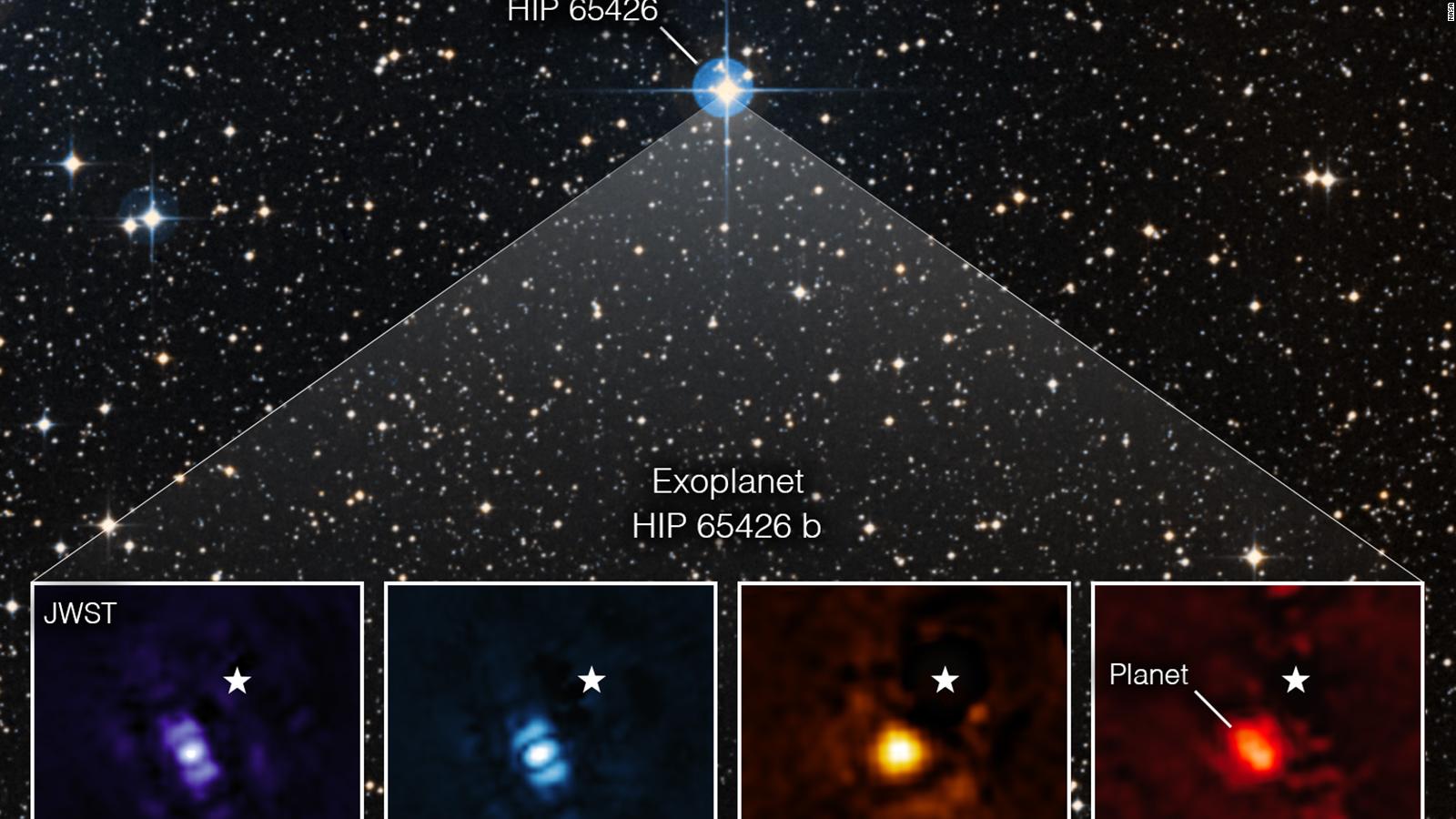(CNN) — Astronomers captured the first direct image of an exoplanet with the James Webb Space Telescope.
The alien, A planet outside our solar system, it is a gas giant with a mass six to twelve times that of Jupiter. Called HIP 65426 b, the planet is 15 to 20 million years old, making it a baby planet compared to Earth, which is 4.5 billion years old and about 385 light-years from Earth.
The planet can be seen in four different bands of infrared light taken by the web’s various instruments. The Webb Telescope views the universe in infrared light, invisible to the human eye, making it the perfect space observatory to reveal details about distant worlds.
The first live web telescope image of an exoplanet shows it in different bands of infrared light. Named HIP 65426 b, the planet is a gas giant.
“This is a transformative moment not just for the Web, but for astronomy in general,” Sasha Hinckley, associate professor of physics and astronomy at the University of Exeter in England, said in a statement.
Hinckley led the observations as part of an international collaboration.
The exoplanet was first discovered in 2017 using the European Southern Observatory’s Very Large Telescope and its SPHERE instrument located in Chile. The instrument then imaged the planet through short infrared wavelengths, but Webb’s ability to see longer infrared wavelengths may shed light on new details.
Scientists are analyzing the HIP 65426 b data obtained through the Web, and an upcoming study will be submitted to the journal for review.
The exoplanet is about 100 times farther from its host star than Earth is from the Sun, which allowed Webb and his instruments to separate the planet from its star. Some of Webb’s instruments are equipped with coronagraphs, or masks, that block starlight, allowing the telescope to take direct images of the outer planets.
Stars are much brighter than planets, and in this case, HIP 65426 b is 10,000 times fainter than its host star in infrared light.
“Getting this image felt like digging for space treasure,” Arrin Carter, lead author of the image analysis and a postdoctoral researcher at the University of California, Santa Cruz, said in a statement. “At first I could only see the light from the star, but through careful image processing I was able to remove that light and find the planet.”
Although the Hubble Space Telescope was the first to image exoplanets directly, the Web’s exploration of exoplanets in the infrared is just beginning. The telescope has already shared the first spectra of an exoplanet by detecting the signature of water in its atmosphere and the first clear evidence of carbon dioxide in an exoplanet’s atmosphere.
The space lab began conducting scientific studies this summer.
“The most exciting thing is that we’ve only just begun,” Carter said. “There are many more images of exoplanets to come that will shape our overall understanding of their physics, chemistry and formation. We may even discover planets that have never been known before.”





